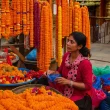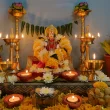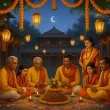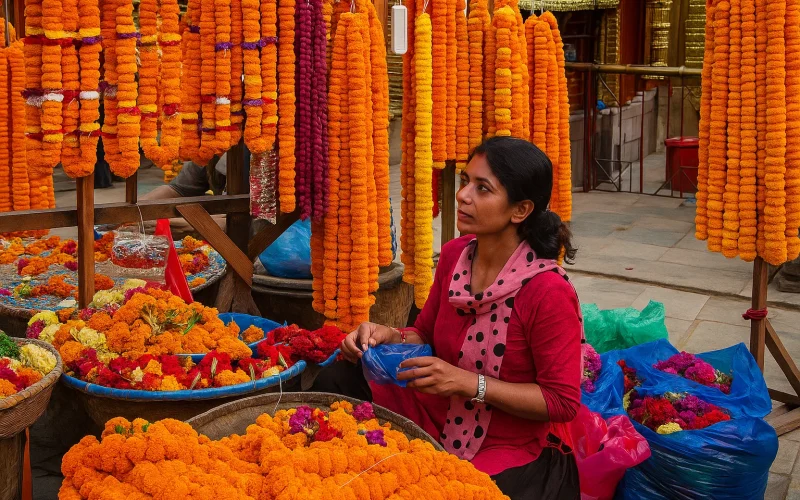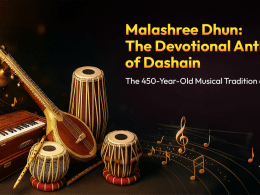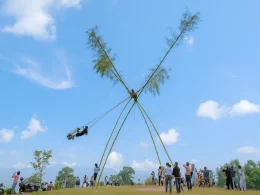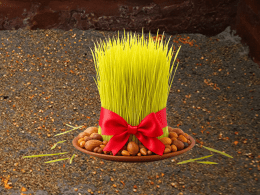Known as Yamapanchak in Nepali, Tihar Festival in Nepal is one of the country’s most beloved and colorful celebrations, coming right after Dashain in importance. Often compared to Diwali in Nepal, this radiant festival goes beyond worshipping deities—it honors the animals, birds, and relationships that bring balance to human life. For five glittering days, homes are illuminated, songs echo through villages, and every being—from crows to cows—is celebrated with deep gratitude.
When Is Tihar Festival 2025 Celebrated?

The Tihar Festival 2025 will be celebrated from October 20, 2025, aligning with the new moon of the Nepali month of Kartik. The festival usually falls in October or November, depending on the lunar calendar. During this period, the entire nation glows under the light of diyas (oil lamps), candles, and decorative bulbs that symbolize hope and prosperity.
The Essence of Tihar Festival in Nepal
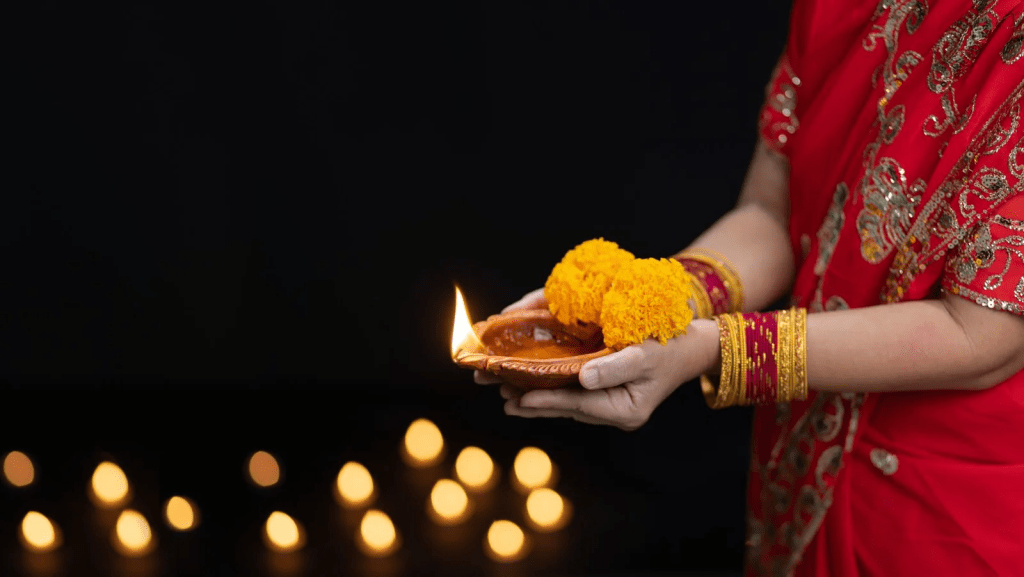
From the bustling streets of Kathmandu to the quiet corners of mountain villages, people light oil lamps, decorate their homes with marigolds, and draw colorful rangolis made of rice flour and petals to welcome Goddess Laxmi, the deity of wealth and prosperity.
Five Days of the Tihar Festival in Nepal
Day 1: Kaag Tihar – Worship of Crows
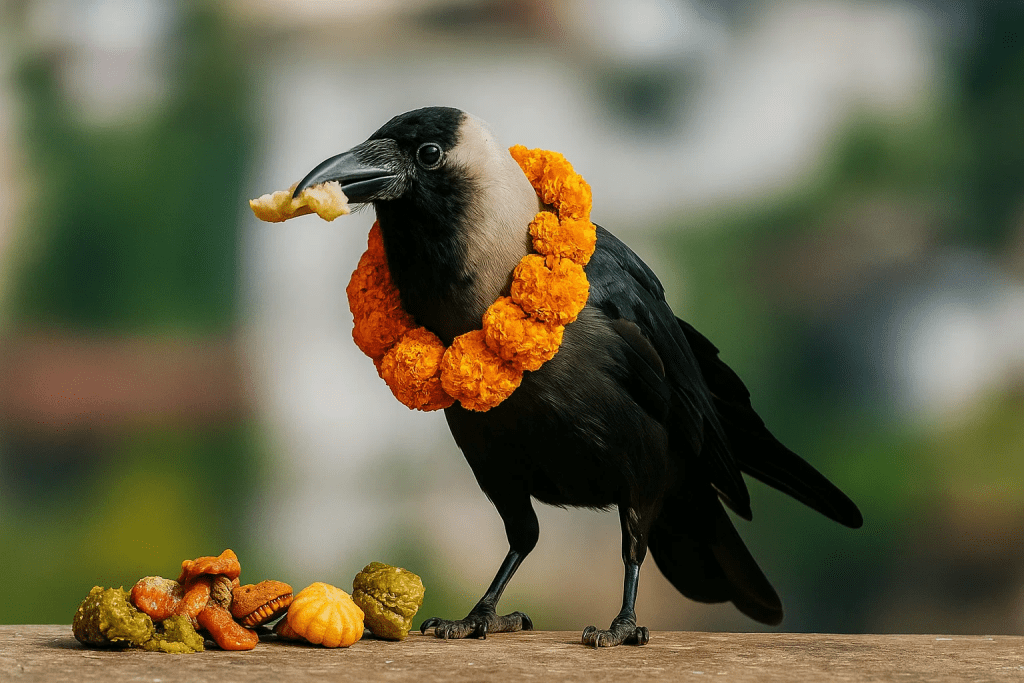
The festival begins with Kaag Tihar, the day of crows, believed to be messengers of Yama, the God of Death. People offer rice, grains, and sweets to crows to prevent misfortune and maintain peace in the coming year. The sight of fluttering crows enjoying offerings on rooftops marks the start of the festival’s spiritual rhythm.
Day 2: Kukur Tihar – Worship of Dogs
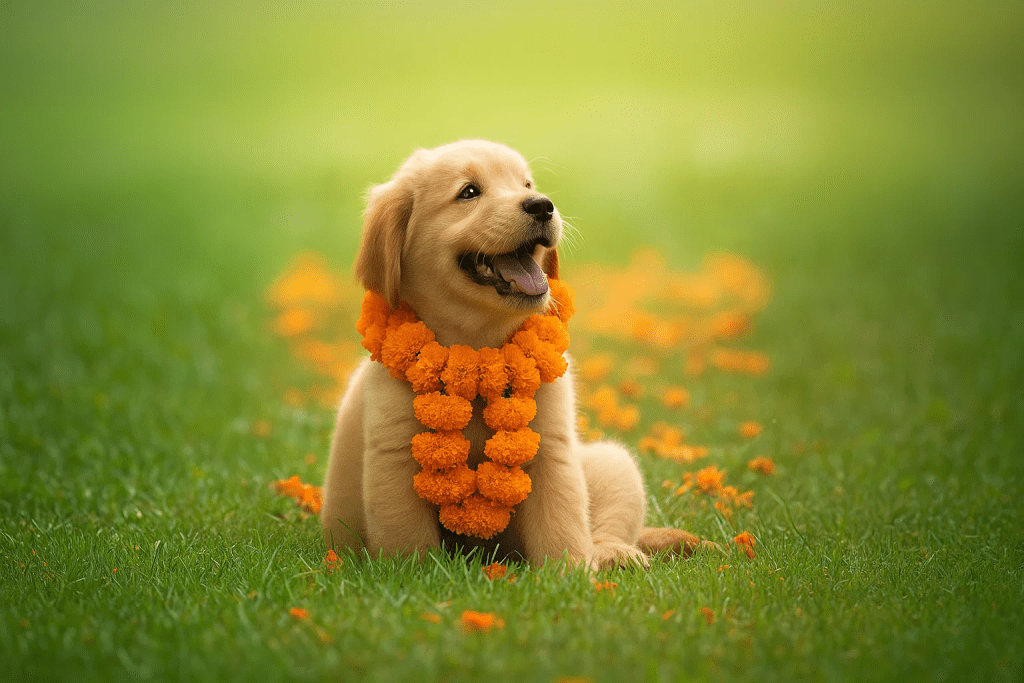
Kukur Tihar, or the Nepali Dog Festival, is one of the most heartwarming days of Tihar. Dogs—whether pets or strays—are worshipped with garlands, tika, and delicious meals. They are recognized as the loyal companions and gatekeepers of Yama. The red tika and marigold garlands symbolize respect, love, and the bond between humans and animals. Even police dogs receive special honor for their service.
The day reflects Nepal’s compassionate culture—showing how animals are considered family and protectors in everyday life.
Day 3: Gai Tihar and Laxmi Puja – Cow and Goddess Worship
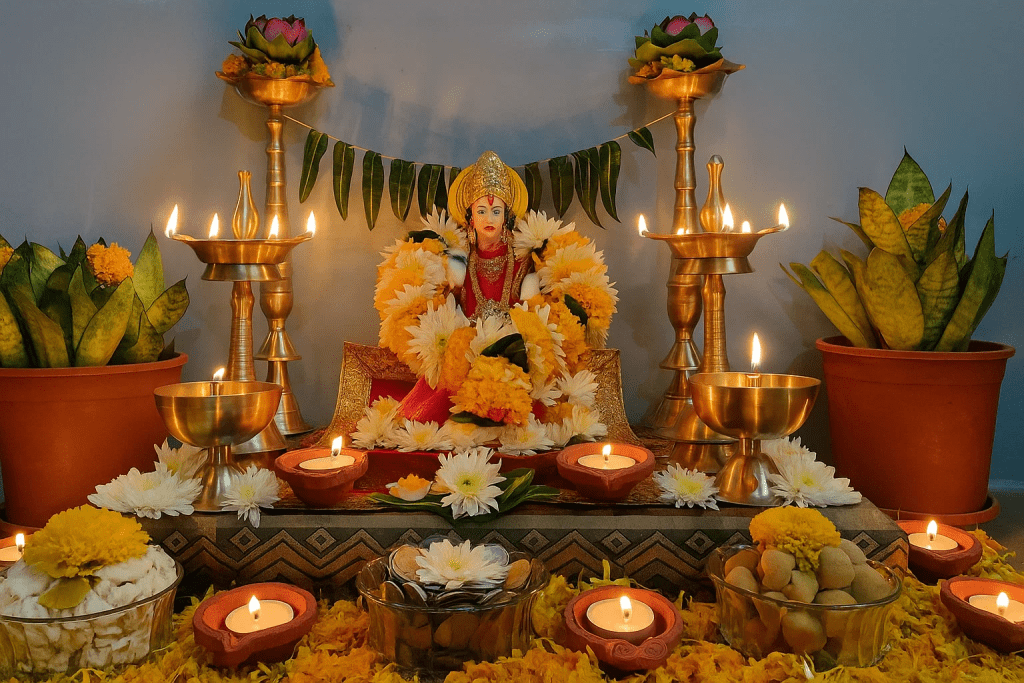
The third day, Gai Tihar, begins with cow worship. Cows, regarded as symbols of motherhood and prosperity, are bathed, decorated, and offered garlands. Later in the evening comes the grand Laxmi Puja, one of the most awaited moments of Diwali in Nepal.
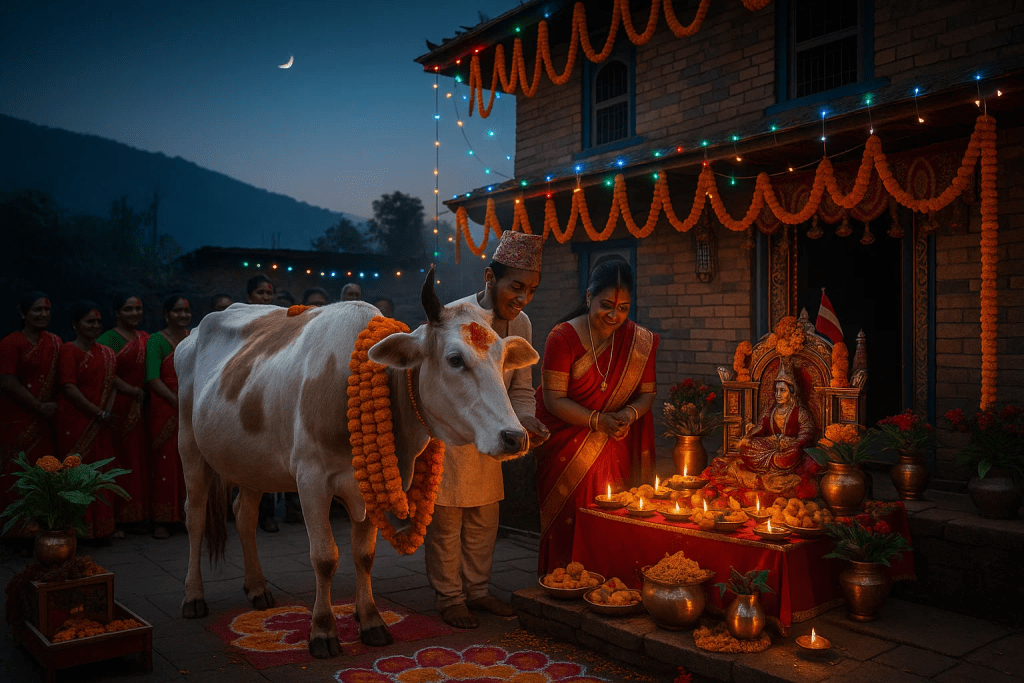
Homes sparkle with diyas, candles, and fairy lights to welcome Goddess Laxmi, the bringer of wealth and good fortune. Children and youths roam around neighborhoods singing Deusi and Bhailo songs, a joyful tradition of exchanging blessings, sweets, and money. The night glows with laughter, music, and devotion, representing the triumph of light over darkness.
Day 4: Goru Puja, Maha Puja & Govardhan Puja
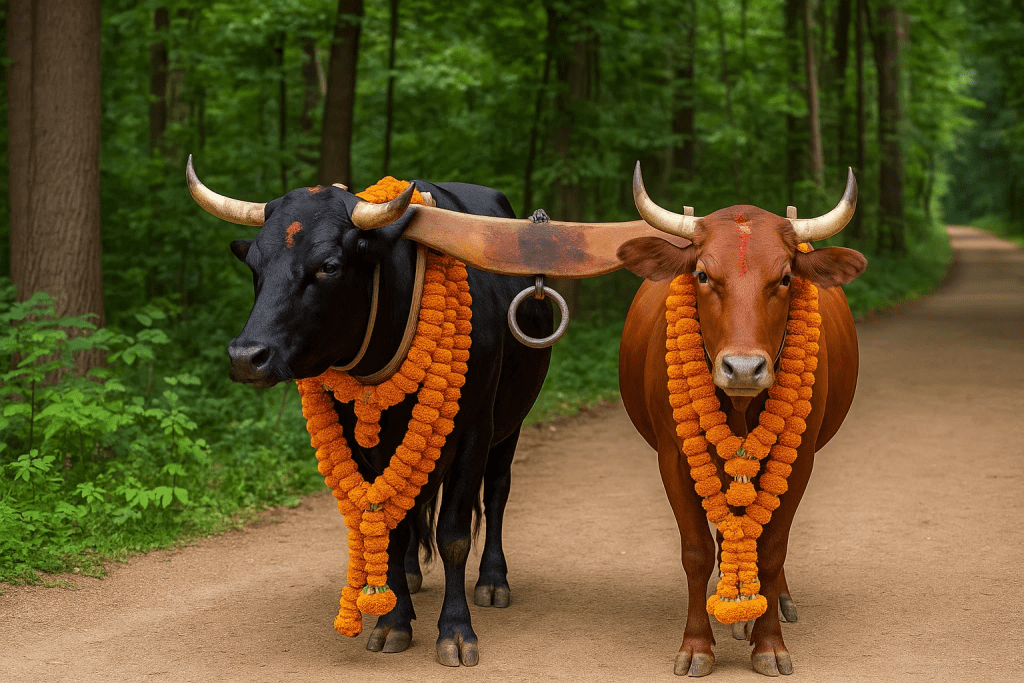
The fourth day varies in rituals based on cultural communities. Farmers worship oxen during Goru Puja, acknowledging their contribution to agriculture. In the Newar community, the day marks Nepali New Year and features Mha Puja—a unique ceremony dedicated to the self, symbolizing purification and renewal of one’s soul.
The Govardhan Puja, rooted in Lord Krishna’s legend, is also celebrated on this day. People create symbolic Govardhan mountains using cow dung and worship them as a gesture of gratitude to nature for protection and sustenance.
Day 5: Bhai Tika – Celebration of Sibling Love

The final day, Bhai Tika, celebrates the sacred bond between brothers and sisters. Sisters apply a colorful seven-layered tika on their brothers’ foreheads, offer garlands, and pray for their long life and success. In return, brothers give gifts and blessings, promising lifelong care and protection.
The ritual originates from the story of Yamuna and Yama, where Yamuna blessed her brother, the God of Death, ensuring no harm would come to him on that day. This touching tradition continues as one of Nepal’s most heartfelt cultural moments.
See Nepal in every scroll: Follow us on Facebook, Instagram, and TikTok for stories that bring the country to life.


